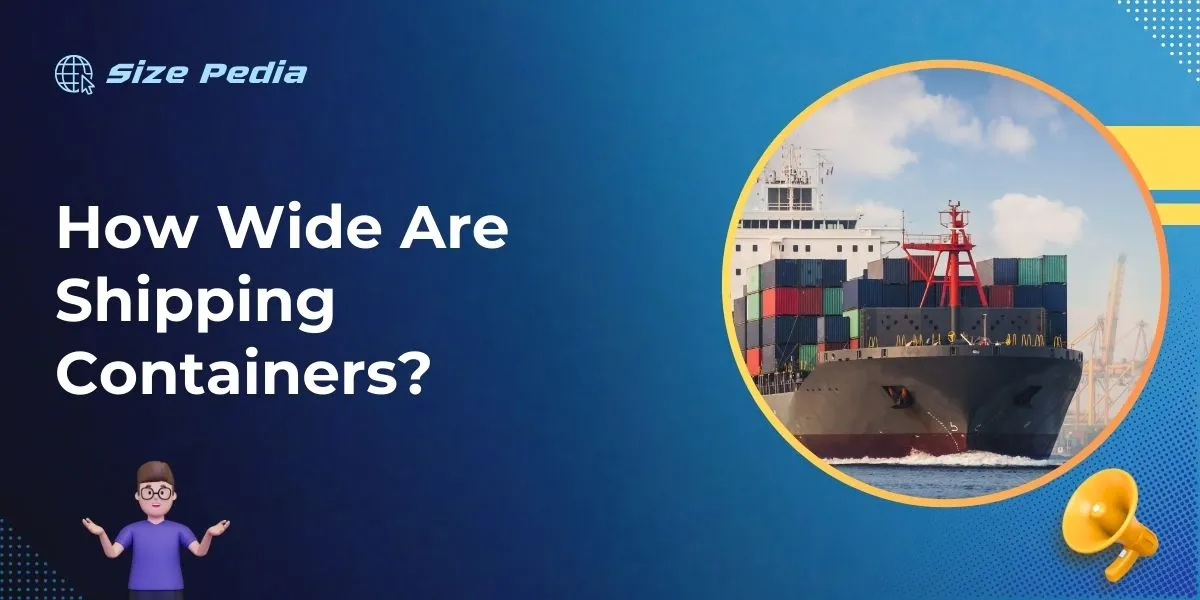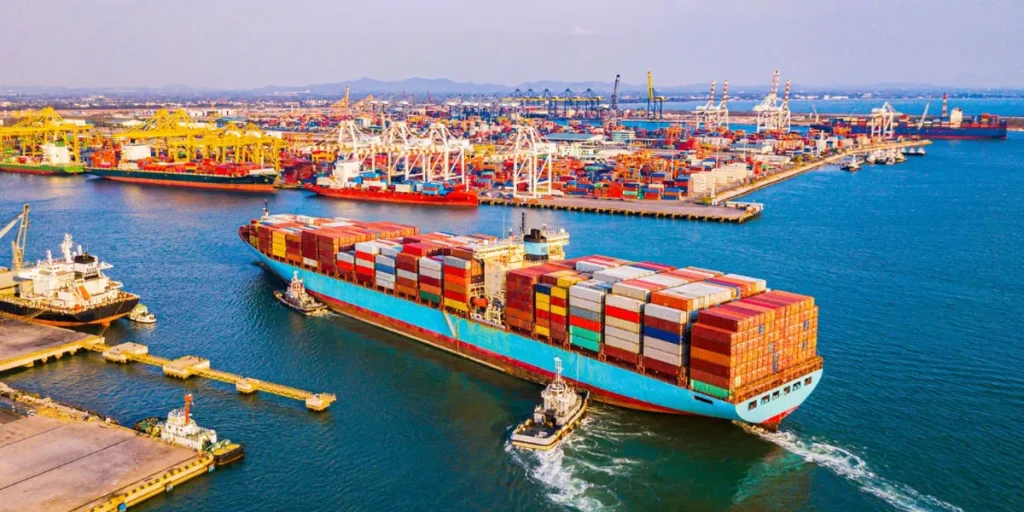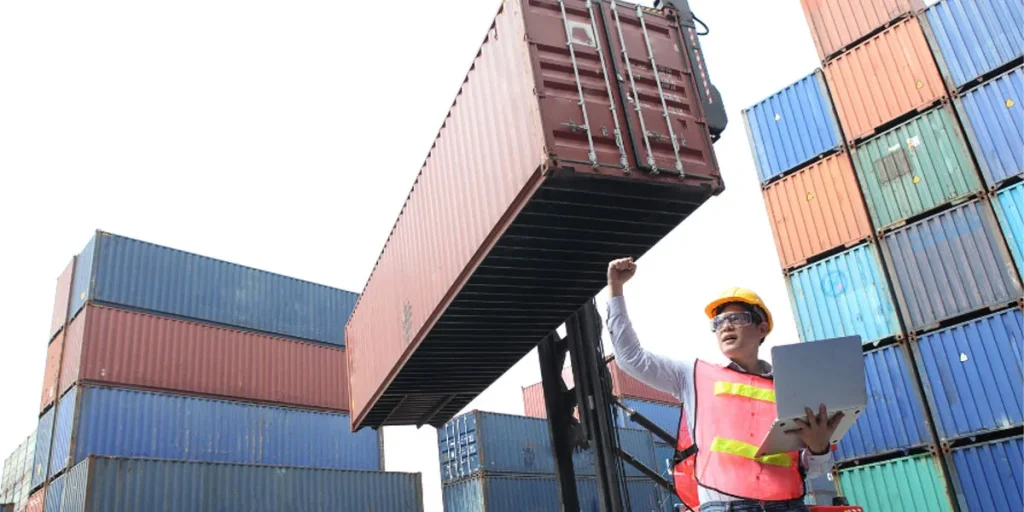Standard shipping containers are typically 8 feet wide. This width is consistent across various lengths and types.
Shipping containers play a vital role in global commerce, serving as the building blocks for international trade.
Their standardized dimensions, which include a common width of 8 feet or 2. 44 meters, make them highly efficient for transporting goods worldwide.
They are designed to easily stack on cargo ships, fit on railway cars, and be hauled by trucks.
With a standardized width, containers can be seamlessly transferred across different modes of transportation, reducing loading and unloading times and ensuring compatibility with handling equipment at ports and terminals.
This uniformity in design not only maximizes space usage but also streamlines logistic operations, making shipping containers an indispensable tool in the movement of products across continents.

Standard Shipping Container Widths
Understanding the widths of shipping containers is crucial for their effective use. Containers must fit the cargo, pass through tight spaces, and comply with transport regulations
. This section details standard widths, ensuring users select the right container for their needs.
Iso Specifications
The International Organization for Standardization (ISO) sets global norms for container dimensions.
ISO standards ensure containers are stackable and secure for transport worldwide. Most shipping containers adhere to these specs, making them highly versatile.
| Type | Width | ISO Code |
|---|---|---|
| Standard | 8 feet (2.44 meters) | 1A |
| High Cube | 8 feet (2.44 meters) | 1AHC |
Common Widths Across Variants
Different container types exist, but most share a common width of 8 feet (2.44 meters).
Various lengths and heights are available, but the width largely remains the same across different variants.
- Standard containers: 8 feet wide (2.44 meters).
- High Cube containers: Same width as standard, but taller.
- Specialized containers: May vary in width for specific purposes.
Inside The Container: Usable Space
Exploring inside a shipping container, we uncover the real value of these steel boxes. The usable space within determines how much you can transport or store.
Let’s delve into the interior dimensions and the impact of container walls on the space available to you.
Interior Dimensions
Shipping containers come in various sizes, but the most common are:
- 20-foot container
- 40-foot container
The interior dimensions typically are:
| Container Size | Length | Width | Height |
|---|---|---|---|
| 20-foot | 19’4″ | 7’8″ | 7’10” |
| 40-foot | 39’6″ | 7’8″ | 7’10” |
These dimensions reveal the length, width, and height you can use for packing goods.
Impact Of Container Walls
The walls of a shipping container are made of corten steel. This material makes them sturdy but also takes up some space.
Each wall, on average, is about 2 inches thick.
Consider this:
- Wall thickness reduces interior width.
- Stacking arrangements may be affected.
- Insulation or modifications might reduce space further.
To maximize the usable space, careful planning is key. Knowing the exact interior dimensions will aid in optimizing every inch for your shipping or storage needs.
Types And Their Widths

Understanding the widths of different types of shipping containers is crucial. It impacts loading, transporting, and storing goods.
Let’s explore the widths of three common container types. These include High Cube, Refrigerated, and Tank Containers.
High Cube Containers
High Cube Containers stand taller than standard types. They offer more space vertically.
Their widths are similar to standard containers, typically at 8 feet wide. These extra inches provide additional storage capacity.
Perfect for lightweight, bulky cargo. Their dimensions make them a popular choice in various industries.
Refrigerated Containers
Used for temperature-sensitive goods, Refrigerated Containers or ‘reefers’ keep products chilled. They have powerful cooling systems built into their frames.
Despite the added machinery, their internal width remains largely the same as standard containers.
Yet, the insulation and cooling equipment slightly reduce the internal width to about 7.5 feet.
Tank Containers
Tank Containers transport liquids, gases, and powders. They come with a cylindrical tank housed within a rectangular frame.
This frame matches the standard shipping container size for compatibility with transport systems. The external width is usually 8 feet.
The tank inside is narrower due to the structure necessary to safely secure the liquid contents.
| Type | External Width | Internal Width | Unique Features |
|---|---|---|---|
| High Cube | 8 feet | 7.8 feet | Taller height for more volume |
| Refrigerated | 8 feet | 7.5 feet | Temperature control for perishables |
| Tank | 8 feet | Varies | Cylindrical tanks for liquids |
- High Cube Containers offer the same width but have a taller profile.
- Refrigerated Containers provide temperature regulation with a slightly narrower interior.
- Tank Containers secure liquid cargo with a standard external width.
Modifying Containers For Wider Loads

Need to move something big? Standard shipping containers might be too narrow. But don’t worry. We can adjust them for wider loads. Let’s see how to do this.
Customization Options
We can reshape containers to fit your needs. Here’s what we can do:
- Cut them wider: We take standard containers and make them bigger.
- Join containers: We can connect two containers side-by-side.
- Add doors and windows: For easy access to your wide load.
Structural Considerations
Safety comes first. When making containers bigger, we must think about:
| Factor | Details |
|---|---|
| Reinforcement: | We add extra steel to keep the container strong. |
| Weight Distribution: | Your load should be balanced to stay safe. |
| Foundation: | A solid base prevents container from tipping over. |
Remember, a wider container must stick to the rules. It has to be safe for travel on roads and by sea. Our team ensures every modified container meets these standards.
Shipping Container Widths In Transportation
Understanding the width of shipping containers is crucial for transportation logistics. It determines how containers move by road and sea.
This post dives into the standard widths and their impact on logistics.
On The Road
On highways, shipping containers must fit within lane dimensions. Standard containers are typically 8 feet wide. This width aligns with road regulations. Let’s break down the specifics:
- Maximum Width: 8.5 feet for road transport without a special permit.
- Common Container Sizes:
- 20-foot containers: 8 feet wide
- 40-foot containers: 8 feet wide
- Exceeding the standard width requires special permits and escorts.
| Container Length | Container Width |
|---|---|
| 20 feet | 8 feet |
| 40 feet | 8 feet |
By Sea
At sea, container ships are designed for maximum efficiency. Container widths are critical for vessel layout and stability. Here’s how widths impact sea transport:
- Standard width fits ship bays precisely.
- Most containers measure 8 feet wide.
- Some specialized containers might be slightly wider but are less common.
Container ships often stack boxes in cells, guided by the universal 8-foot width.
Implications For Logistics
The width of a shipping container has direct implications for logistics. Precise dimensions ensure a smooth transition between transportation modes. Below are key logistics implications:
- Warehouse design must accommodate container widths for storage and handling.
- Loading equipment is standardized to the 8-foot width scale.
- Transport infrastructure, like bridges and tunnels, must consider container dimensions.
Overall, shipping container widths play a vital role in global trade. They ensure that the flow of goods remains consistent and efficient.
FAQs About the Width of Shipping Containers
Do They Make 10 Ft Wide Shipping Containers?
Standard shipping containers typically don’t come in widths of 10 feet. Most containers have a standard width of 8 feet.
Custom or modified containers might offer different dimensions to meet specific needs.
How Wide Is A 40ft Shipping Container?
A standard 40FT shipping container is typically 8 feet wide.
Are All Shipping Containers 8ft Wide?
No, not all shipping containers are 8ft wide. Standard containers typically measure 8 feet in width, but there are also wide cube containers that are 10 feet wide.
How Wide Is A 20 Shipping Container?
A standard 20-foot shipping container is typically 8 feet wide.
Conclusion
Understanding shipping container widths is vital for efficient logistics planning. Standard dimensions ensure uniformity and compatibility globally.
Opt for the best container size to guarantee secure, cost-effective goods transportation. Ready to choose the right container? Your cargo’s journey depends on this crucial knowledge.
Resources:
https://oceanservice.noaa.gov/economy/shipping.html
https://doa.az.gov/about-us/surplus-property/shipping-containers-purchase
